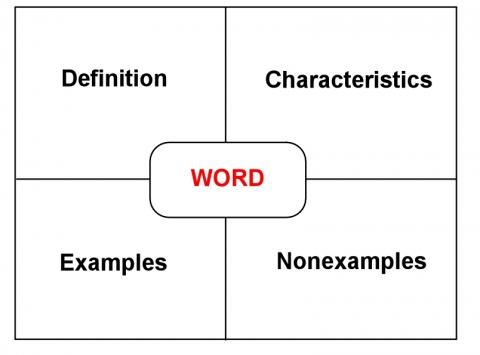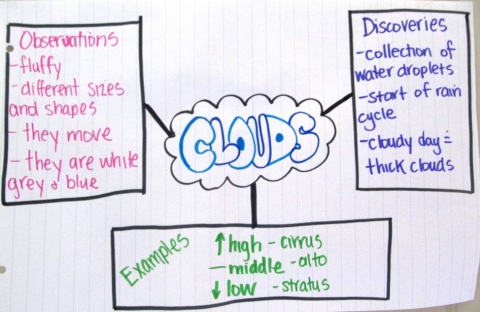Key Concept Explorations

Key Concept Explorations (shironosov, iStockphoto)
This strategy helps students explain their understanding of a concept using a graphic organizer.
Why use it?
- To help students demonstrate their understanding of concepts (e.g., as they sort and classify words and phrases related to the concept).
- To provide a structure for students to explain their understanding of a concept and provide examples illustrating what it is and is not.
- To develop and use appropriate vocabulary relevant to a concept.
Tips for success
- Provide provocations to have students think about which words can be compared & contrasted with each other.
- Provide time for students to refine their understanding and reflect on their learning.
- Provide students with opportunities to explain and elaborate on their ideas, organization of characteristics, and examples.
How do I use it?
- Before using this strategy, introduce its purpose to the students and provide a structured example to teach and model expected behaviours.
- Model the use of appropriate vocabulary (e.g., “You observed that the inside of the bag is wet – you noticed that condensation forming there.”) as a way to help students make connections between the words and characteristics of the concept. Encourage students to use this vocabulary when they communicate with others about what they are learning.
- With the students, create an ongoing list of words and phrases related to the concepts being studied. Students can group the words/phrases in the list in a variety of ways, and decide on a characteristic for each group that they create.
- Have students identify a word that represents the characteristics that these groupings have in common.


- Discuss a possible definition for this word or concept.
- Analyze which characteristics are essential and non-essential to their definition.
- Have students contribute examples of the concept from their experiences and examples that do not represent the concept.
- Provide a graphic organizer for students to contribute their ideas.
Variations
- Graphic organizers can be used to demonstrate understanding of the concept (e.g., by defining or describing it, by identifying its essential attributes or characteristics, by providing examples illustrating what it is and what it is not).
- Students can draw a picture of the word or concept and its characteristics.
- Post students’ understanding of concepts in the classroom and invite them to continue to add their ideas as they investigate and explore concepts further and develop deeper understandings.
Related Skills